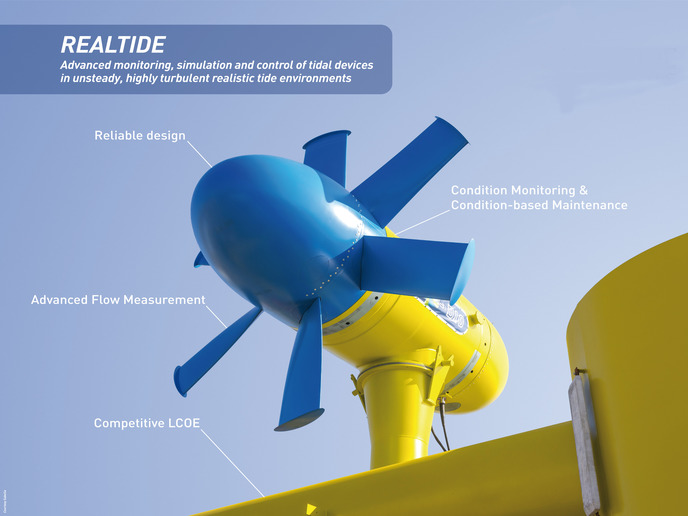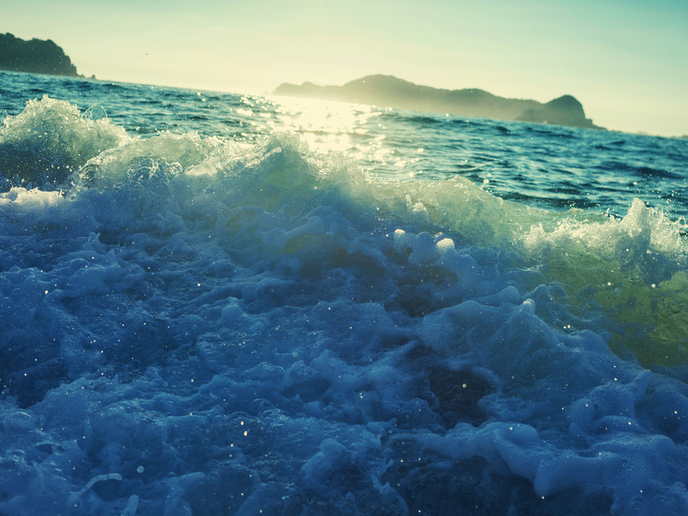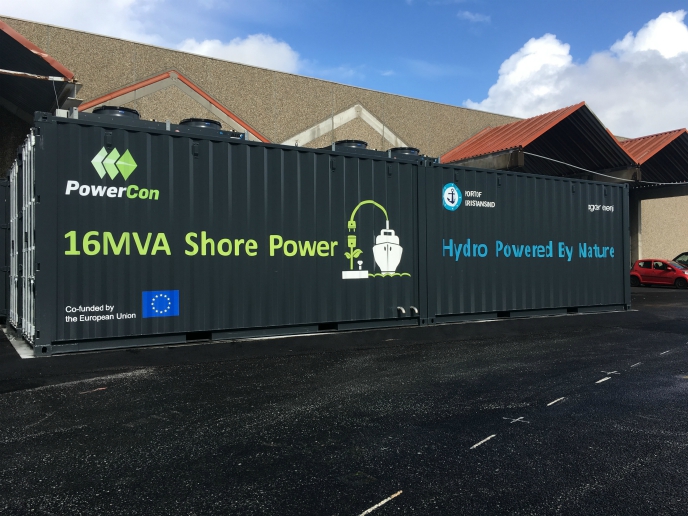Tackling turbine failures enhances tidal energy viability
Tidal energy converter devices transform the kinetic energy of moving fluid into the motion of a mechanical system, which can then drive a generator. The kinetic energy in tidal currents – the flow of seawater induced by rising and falling tides – can be converted to electricity by a variety of devices. “Many tidal current turbines look much like a wind turbine placed on the seabed,” says RealTide (Advanced monitoring, simulation and control of tidal devices in unsteady, highly turbulent realistic tide environments) project coordinator Rogerio Pintas Cabral, senior project manager at Bureau Veritas Marine & Offshore in France. “The tidal currents move the rotors, generating electricity. When the tide reverses, the rotors reverse direction and continue to generate electricity.” Electricity is then sent to the grid on shore via a cable. In contrast to highly variable wind or solar electricity production, electricity from tidal energy is predictable. This, says Cabral, makes it a potentially valuable supplement to variable sources, once operational costs have been reduced. A key challenge in terms of achieving cost-effective operations is the fact that tidal devices are prone to failure. “Devices need to be very robust and capable of unattended operation, given that they are situated underwater,” explains Cabral. “The marine environment is extremely harsh, with risks including turbulence, overload due to excessive waves and algae growth.”
Addressing points of weakness
The RealTide project was launched in January 2018 with the aim of identifying the main causes of tidal turbine failure at sea. The data gathered have been used to rethink and redesign key components, namely the blades and power take-off (PTO) systems, in order to better adapt them to the complex environmental conditions. PTO is the technology responsible for converting the kinetic energy of wave or tidal power into usable energy. During the project, advanced monitoring systems were integrated with these identified subsystems, and new maintenance strategies developed. Lab tests, together with tank tests and sea trials were carried out to measure and model real tide flow conditions. “Our overall objective was to find ways of increasing reliability and improving performance over the full tidal turbine life,” notes Cabral. “This was only possible through the collaboration of highly specialised partners.”
Competitive renewable energy
Having run for more than 2 full years, the project has produced some important findings. Numerous failure modes induced by the specific operating conditions of tidal turbines were identified, enabling the team to make recommendations on ways of increasing reliability. These recommendations will feed into future designs. Monitoring technologies most suitable for tidal turbines were also identified. “We also made progress in achieving more efficient blade design,” adds Cabral. “This includes integrating embedded fibre optics into the blades for monitoring purposes.” Cabral is confident that the results achieved to date underline that the project is moving in the right direction. Tidal technology is still at a relatively early stage, which means that the gathering of data is critical to identifying existing weaknesses and pinpointing the right developmental path to follow. “We have demonstrated that increases in performance and reliability are possible,” he says. “Reducing the tidal turbine downtime due to failure and maintenance activities, while increasing electricity production and subsequent revenue, will make tidal energy more competitive. New machines using the outputs of RealTide will therefore be more financially viable and attractive to investors.”
Keywords
RealTide, turbine, wave, ocean, tidal, kinetic, energy, electricity, currents







